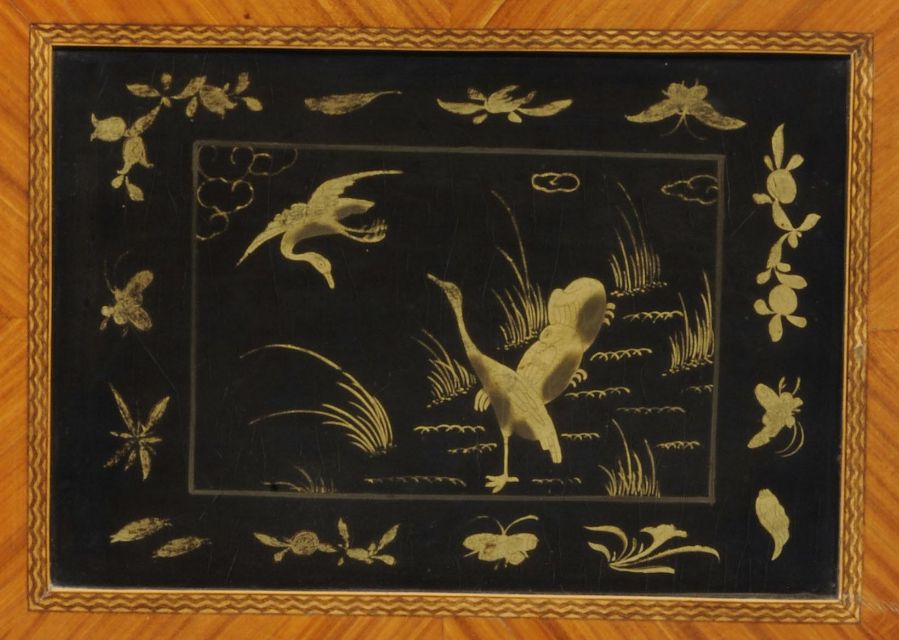A foreign taste
Let’s move the spotlight onto the central lacquered plate, the biggest of the four, which is placed on the drop front. It shows a golden decoration of geese, framed by a garland of flowers and leaves on a black background. We can see at the center a simple and delicate rendition of a natural scene with a small group of geese; some sleeping, some standing, some flying. The geese scene is surrounded by a frame of flowers. While both flowers and geese are motifs often found on Japanese lacquerware, the way they are placed and organized is not. Especially the way the flowers frame the geese is rarely seen, and hints that this lacquer may have been created by Japanese craftsmen with a foreign market in mind.
The lacquerware traded by the Japanese was not the same in shape and design as the lacquerware made for the Japanese market. European traders, such as the Dutch, were often able to discuss and order the desired wares in advance. The types and styles of objects made for foreigners developed and transformed throughout the centuries. In the case of the panels on our drop-front secretary, they could be categorized in the “pictorial style”, a style of decoration which arose in the early 17th century and lasted into the 18th century. The pictorial style is characterized by the use of gold on a shiny black background, and appears simple when compared with previous lacquer styles aimed at foreigners, which feature heavy use of mother of pearl inlays, as well as heavy decorations in gold and other pigments. (Fig. 3) The pictorial style turned into an even lighter and simpler style of decoration towards the end of the 18th century.
In the next step of this story we will see how the lacquer panels, in their simplicity and lightness, interact with the late 18th century European furniture design embodied in our drop-front secretary.
